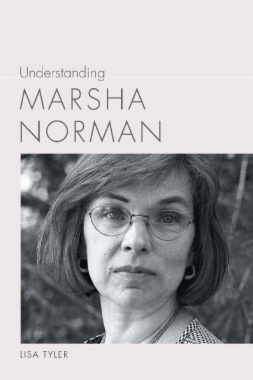Best known for her Pulitzer Prize–winning play 'night, Mother and her acclaimed adaptations of The Secret Garden and The Color Purple for musical theater, Marsha Norman has produced an impressive oeuvre that includes not only works for the stage but also a novel and several television screenplays. The first book on the Louisville-born writer in twenty years, Understanding Marsha Norman introduces readers to her life and work while making a persuasive case for her preeminence among America's leading dramatic artists.
Following a biographical introduction, the book examines such early plays as Getting Out, Third and Oak, and Circus Valentine, which, according to the playwright herself, taught her the skills she needed to write her more successful works—most notably the much-lauded two-character drama 'night, Mother, which centers around an apparently rational young woman's choice to commit suicide. Subsequent chapters examine Norman's underrated novel The Fortune Teller and three mid-career plays that rewrite the traditions of the Western, the biblical story of Sarah and Abraham, and the legend of Daniel Boone. Her more recent plays, including Trudy Blue, 140, and Last Dance, acknowledge the limitations of romantic relationships, while her forays into musical theater and television, including scripts for such programs as Law and Order: Criminal Intent and the Peabody-winning HBO series In Treatment, signal a dramatist who is ever willing to take risks and venture into new genres.
At her best when writing about interesting and troubled women and their relationships with each other, Norman has received much less critical attention than male contemporaries such as Sam Shepard and David Mamet. This engaging and edifying book helps rectify that disparity.
- Cover�������������������������������
- UNDERSTANDING MARSHA NORMAN�������������������������������������������������������������������������������������������������
- Title�������������������������������
- Copyright�������������������������������������������
- Dedication����������������������������������������������
- CONTENTS����������������������������������������
- Series Editor’s Preface�������������������������������������������������������������������������������������
- Acknowledgments�������������������������������������������������������������
- Chapter 1 Understanding Marsha Norman�������������������������������������������������������������������������������������������������������������������������������
- Chapter 2 “All the Help She Can Stand”: The Transformative Power of Women’s Friendship in Getting Out�������������������������������������������������������������������������������������������������������������������������������������������������������������������������������������������������������������������������������������������������������������������������������������������������������������������������������
- Chapter 3 Early Plays: Third and Oak, Circus Valentine, and Traveler in the Dark����������������������������������������������������������������������������������������������������������������������������������������������������������������������������������������������������������������������������������������������������������������
- Chapter 4 “Firsthand Knowledge of How Suicides Feel”: ’night, Mother����������������������������������������������������������������������������������������������������������������������������������������������������������������������������������������������������������������������������
- Chapter 5 Vanishing Children: The Fortune Teller����������������������������������������������������������������������������������������������������������������������������������������������������������������
- Chapter 6 Rewriting the Western Tradition: The Holdup, Sarah and Abraham, and Loving Daniel Boone�������������������������������������������������������������������������������������������������������������������������������������������������������������������������������������������������������������������������������������������������������������������������������������������������������������������
- Chapter 7 “I Heard Someone Crying”: The Secret Garden�������������������������������������������������������������������������������������������������������������������������������������������������������������������������������
- Chapter 8 “Sex Just Doesn’t Work”: Trudy Blue, 140, and Last Dance����������������������������������������������������������������������������������������������������������������������������������������������������������������������������������������������������������������������
- Chapter 9 Writing for a World of Spectators: Television Work����������������������������������������������������������������������������������������������������������������������������������������������������������������������������������������������������
- Chapter 10 Later Musicals: The Red Shoes, The Color Purple, The Trumpet of the Swan, The Master Butcher’s Singing Club, and The Bridges of Madison County�������������������������������������������������������������������������������������������������������������������������������������������������������������������������������������������������������������������������������������������������������������������������������������������������������������������������������������������������������������������������������������������������������������������������������������������������������������������������������������������
- Works Cited�������������������������������������������������
- Index�������������������������������

